“Oh,” you say to yourself. “What a pretty little bug!”
Ah, but little do you know that this bug is out to hurt your feelings and ruin your day. Its brightly striped body, it’s cute little roundness; that bug is murdering your potatoes as your croon over how cute it is and share the pictures all over Instagram (or whatever social media platform is most popular while you’re reading this, my friends).
Today, we’ll look at the worst potato pest in the business and get some tips and tricks to avoid them, discourage them, and when that doesn’t work. Destroy. Them.
Mwahahahaha.
Let’s dig in. Just like they do.
How To Identify These Monsters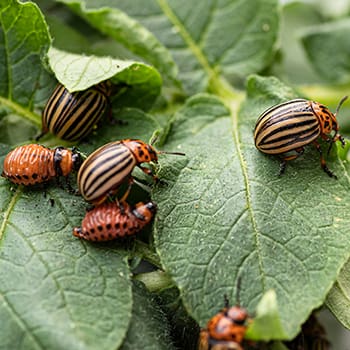
The Colorado potato bug (or beetle, depending on where you’re from and whom you’re speaking with) comes from the Great Plains areas of the United States. These may just be called “potato bug” in your area if you’re not near them because they are simply everywhere these days.
These insects may appear to have yellow or honey-brown striping against black lines that stretch the length of a rounded, upright body. The head and legs are typically black but may be grey or brown depending on the age and nutrition of the insect.
As youngsters, these beetles are usually red and wiggly; like tiny little worms creeping all over your favorite nightshade plants.
That’s right, these bugs have a taste for death! Well, sort of. Most insects leave nightshades (tomatoes, eggplants, peppers, potatoes, etc) alone because of the toxicity of these plants. It’s frequently a problem for them to eat them. But not these guys. They can guzzle down your plant’s leaves and walk it off the next day.
But if they want to taste death, let’s give them some.
What Are We Going To Do About Them
Get rid of them before we lose our plants, that’s what we’re going to do.
Though commercial farms can cope with some losses of plants, it’s likely that you only have 5-10 potato plants altogether. You really can’t deal with a low yield considering what you’ve put into them.
Treat your gardening area with Spinosad. It overstimulates the nerves of the bugs and creates a death that is pretty quick and efficient. For those out there who would prefer not to use chemicals, you’ll be hand-picking each individual beetle from your plants, all their eggs, and their larvae, too. It takes forever. This is why most people use chemicals.
Prevention And Other Tips
Aggressively mulch your plants to the point that you risk root rot, bluntly. It’s not the best option and it’s not the best idea, but it does keep your greenery safe.
Now, that said, you can lose a substantial amount of greenery on most nightshades before you start worrying about the fruits (or tubers in this case) and the yield. Generally speaking, you can lose up to 40-60% of potato greenery aboveground before you start to see losses underneath.
But why risk it? It’s always better to have the healthiest, brightest, best plants that you can on both sides of the soil. In my honest opinion, place a fungicide designed for potato beetles on your plants, spray for them, and also mulch your plants if it’s at all possible. You may still end up with a few potato beetles, but you won’t end up with anywhere near as many.
In most cases, commercial farms simply deal with the losses and flame or burn out the heavily infested plants. We can’t really do that because we’re dealing with a much smaller scale of production in almost all cases. That said, if you can flame them, do it. The plant may even grow back if it’s close to the end of the season, at least enough to save your crop beneath the soil. And if it’s close enough to the harvest season, you may not really need it to; potatoes can go quite a long stretch without any foliage above the ground.
Tubers And Troubles
We’re going to take one second here to investigate one other thing: tuber-eating worms and creepy crawlies that live beneath the soil. What are you supposed to do about those? And how do you prevent them?
In most cases, you simply can’t. You’re stuck with losing some potatoes to the hungry little friends that are making sure your soil isn’t too compacted to grow in. And, ultimately, we should be thanking them for doing such heavy lifting and hard work. It’s frustrating to pull a potato plant and find several tiny potatoes and one beautiful, large russet that’s been utterly destroyed by feasting insects. But that is how things work in gardening and often, it is simply the way the dice fall.
That said, you can use some deep-soaking anti-pest soaks for your plants, but most of these also stem from the production of the plant itself. I don’t really heavily recommend them, but if you’re coming up with very low yields or nearly nothing after a long year of growing, it may be time to soak your gardening area and let it stay neutral and unplanted for a year. This should get rid of plenty of your pests without hurting a lot of your good creepy-crawly friends, though it won’t miss them entirely, either.
Final Thoughts
Ultimately, your best bet to keeping your potatoes safe is to go ahead and just make sure that you mulch as heavily as you can for your area, and watch for these awful little bugs to pop up. Destroy their population when, or hopefully if, you see them. And if you don’t see them, count yourself lucky. Their spread is aggressive and they keep popping up in new gardens across the country all the time, especially with the way climate change is trending.
Do you know of a way to avoid Colorado potato bugs that we haven’t covered? Have a personal anecdote you’d like to share with us? Comment below and, as always, Happy Gardening.
The Herbs You Need to Keep Close During Dark Times (Video)
10 Tomato Growing Tips For Beginners
The Plants That Are Illegal To Grow, But Perfectly Fine To Forage
How To Get Rid Of Tomato Hornworms Before They Destroy Your Tomato Plants
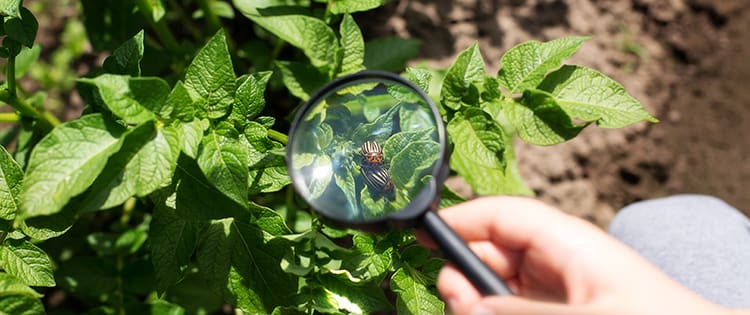
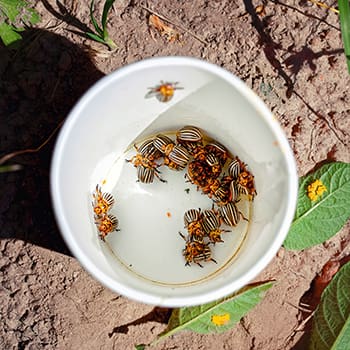
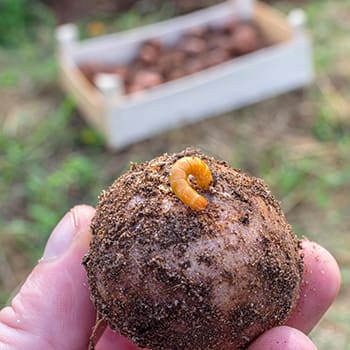
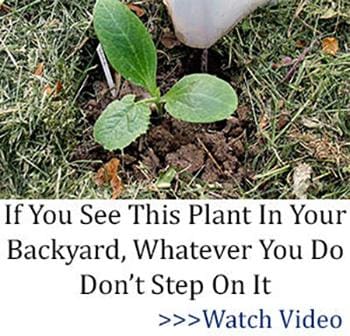








Been there, done that. These little critters overwhelmed my potato garden this spring. However, putting some water into a plastic container with a little dish soap will help you to drown them, as you push them off the leaves and into the cup. Keep the dead critters in the soapy water. Keep using the same container to take them out 2-3 times per day. You are trying to get ahead of their egg laying. Once you have quite the stinky mess of dead bugs in the soapy water, mix that soapy water with half new water in a spray bottle. Spray that mixture back on the potato leaves. Imagine if a human was crawling around on dead human goo. They wouldn’t live very long either. Same happens to these little bugs. And it doesn’t hurt the potatoes.
Second thing to do: As you are planting your potatoes, keep some orange peels and shred them in some water (such as in a food processor or coffee grinder). Add some of the shredded orange peels into the same hole as your planted potatoes. That should discourage underground nematodes too.
Don’t plant potatoes in the same area/soil each year as the potato bettle larvae dig into the soil only to erupt next year. Think of this as a buffet for the newly hatched potato bettle.
Start growing marigolds early and inside. Transfer to hanging baskets on shepherd hooks in the potato patch to help deter bettles. If you plant marigolds into the potato patch, the plants will choke out the marigolds.
I spray my plants with Sevin but still slap off bettles into a small bucket of soapy water twice a day. Here’s a hint, walk both ways when hunting for beetles. As an example, go from east to west and then reverse, walk from west to est. You’d be surprised how many bettles you missed. Look for the cluster of yellow/orange eggs on the underside of the leaves and squash with your fingers.
Soil rotation should be every 4 years due to pests and the heavy draw of nitrogen from growing potatoes. Plant bush beans on last year’s soil and till them under, beans and all. The following year, nightshades and the following year, lettuces. Another option is to plant potatoes in buckets or felt bags. Easy to harvest and you can move the spent soil to a compost bin and mix in with fresh compost/manure or simply discard it.